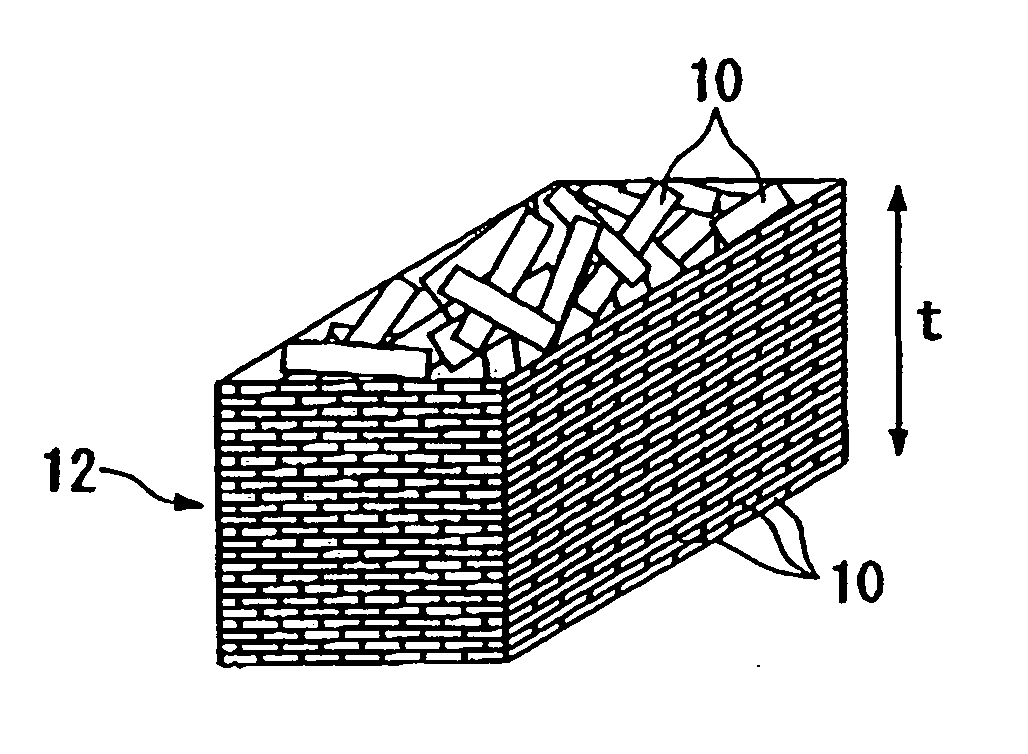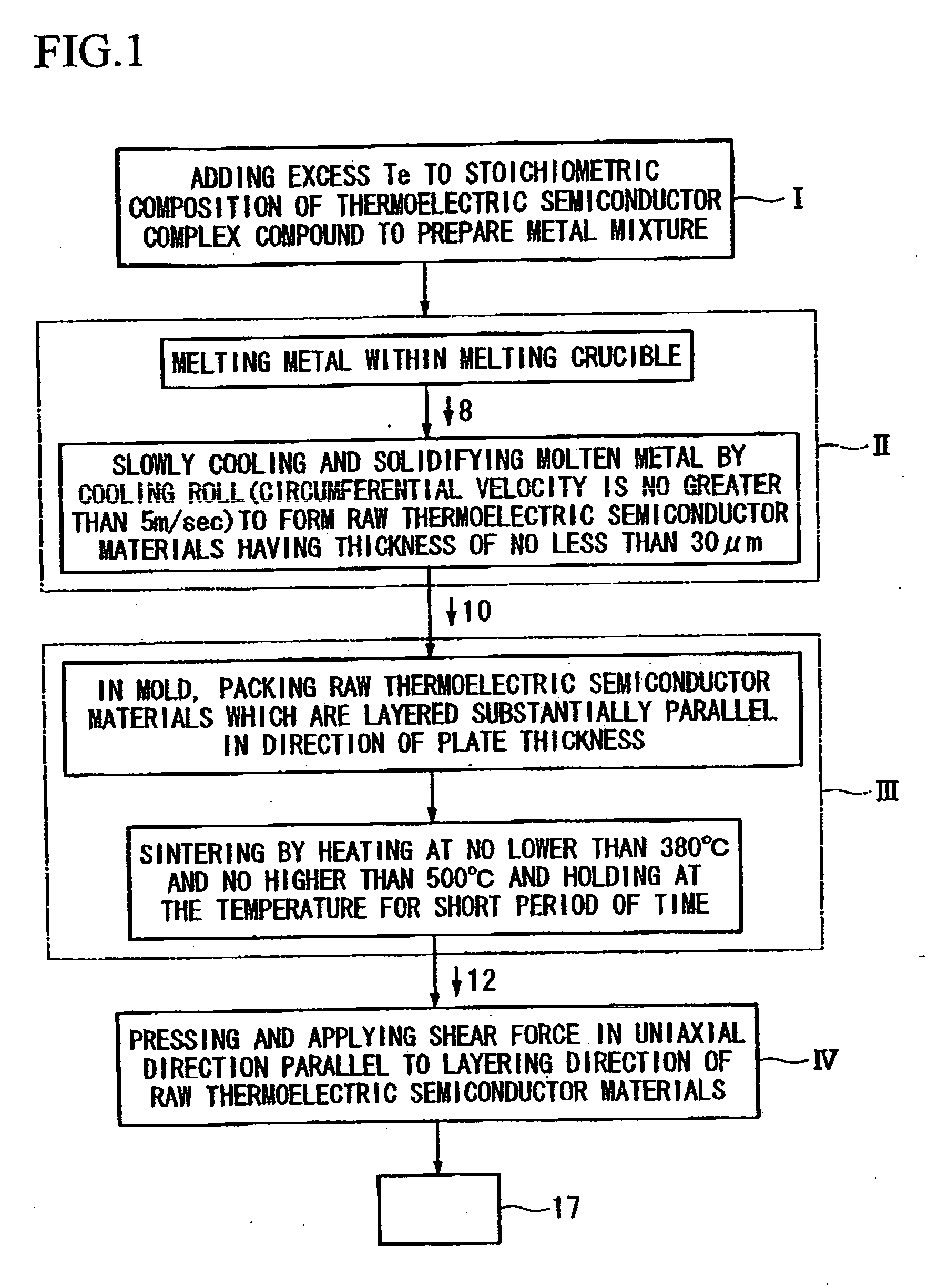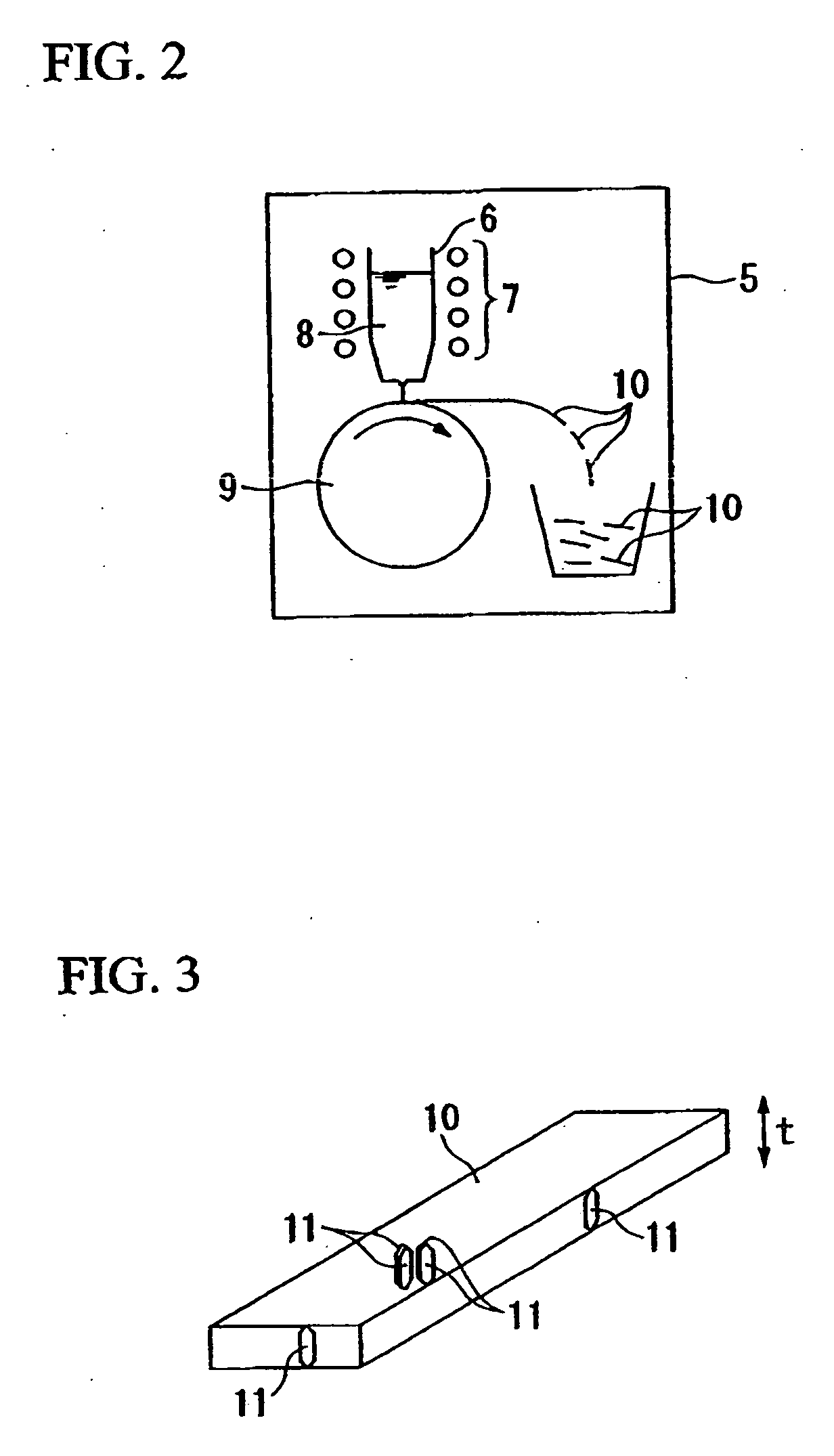Thermoelectric semiconductor material, thermoelectric semiconductor element therefrom, thermoelectric module including thermoelectric semiconductor element and process for producing these
a technology of thermoelectric semiconductor elements and semiconductor materials, which is applied in the direction of thermoelectric device junction materials, thermoelectric device manufacturing/treatment, thermoelectric devices, etc., can solve the problems of difficult to overcome problems, few methods for still increasing performance, and insufficient mechanical strength of thermoelectric semiconductor materials, etc., to achieve enhanced thermoelectric performance, enhanced thermoelectric performance, and uniform deformation rate
- Summary
- Abstract
- Description
- Claims
- Application Information
AI Technical Summary
Benefits of technology
Problems solved by technology
Method used
Image
Examples
example
[0179] A thermoelectric module 1a was manufactured by forming a PN element pair of P type and N type thermoelectric semiconductor elements 2a and 3a manufactured by a manufacturing method for a thermoelectric semiconductor element of the present invention. The thermoelectric performance of the module was compared with that of a thermoelectric module manufactured in accordance with another method.
[0180] As a result, the Figure-of-Merit, shown by solid circle ● and open circle o in FIG. 26, were obtained as the thermoelectric performance of thermoelectric module 1a manufactured in accordance with the present invention.
[0181] The result indicates, it was found that high thermoelectric performance is gained according to the invention.
[0182] As a result, thermoelectric module of the present invention indicates high thermoelectric performance in comparison with a case in which a P type thermoelectric semiconductor element and an N type thermoelectric semiconductor element are both manu...
PUM
| Property | Measurement | Unit |
|---|---|---|
| Temperature | aaaaa | aaaaa |
| Temperature | aaaaa | aaaaa |
| Fraction | aaaaa | aaaaa |
Abstract
Description
Claims
Application Information
 Login to View More
Login to View More - R&D
- Intellectual Property
- Life Sciences
- Materials
- Tech Scout
- Unparalleled Data Quality
- Higher Quality Content
- 60% Fewer Hallucinations
Browse by: Latest US Patents, China's latest patents, Technical Efficacy Thesaurus, Application Domain, Technology Topic, Popular Technical Reports.
© 2025 PatSnap. All rights reserved.Legal|Privacy policy|Modern Slavery Act Transparency Statement|Sitemap|About US| Contact US: help@patsnap.com



